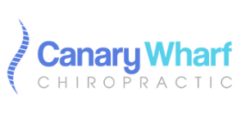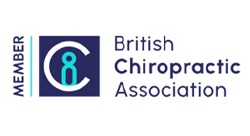Scoliosis is a spinal condition which can affect babies, children, adolescents and adults. It causes the spine to curve into an S shape, which can sometimes make the body look uneven or cause back pain. While some babies are born with the condition, scoliosis can start to appear at any age and usually presents between 10-15 years of age. It is thought that three or four children out of every 1,000 in the UK have the condition and require treatment.
The severity of scoliosis can different greatly between cases, but most of the time people with scoliosis live a normal and active life. A chiropractor cannot cure the ongoing condition, but they can help with the symptoms associated with scoliosis.
Where does scoliosis come from?
There are many different types of scoliosis which can cause the spine to twist and curve. In 8 out of 10 cases, the cause of scoliosis is unknown – this is known as idiopathic scoliosis and usually presents in adolescence as the body starts to grow suddenly. There is no known cause of this type of scoliosis but it is not linked to diet, exercise, or bad posture. There is however a genetic link so this type of scoliosis may possibly run in families.
If scoliosis is present from birth, this means the spine didn’t form properly in the womb which is known as congenital scoliosis. Babies and toddlers with the condition may not always need treatment, as the curve could improve over time.
Curving of the spine can also start later in life, which is known as degenerative scoliosis. Bones get weaker as the body ages, and general wear and tear can result in a curved spine. This is usually diagnosed in adults over 50.
In rare cases scoliosis is caused by a nerve or muscle condition, or ongoing health problem or syndrome. Neurological conditions can stop the muscles from working properly, which can result in curvature of the spine. This type of scoliosis is usually progressive, meaning the curve will usually get worse over time.
Signs and symptoms of scoliosis
You can usually see the effects of scoliosis on the body, but it’s important to know what to look for. If you think you or your child have any of the following symptoms of scoliosis then you should get checked out by a GP for a diagnosis.
- A visibly curved spine ( a mild or severe curve)
- Uneven shoulders
- Torso leaning to one side
- Ribs sticking out on one side
- One shoulder blade or hip sticking out
If you ask the person with suspected scoliosis to bend forward from the hips with their arms straight, you’ll get a better view of the spine and ribs to spot for misalignment.
Scoliosis treatment options
Not all people diagnosed with scoliosis will need treatment. In children and young adults, the curvature of the spine may improve over time, and there are very few negative side effects such as pain which interfere with day to day life.
If the curve of the spine is quite severe or it is thought it will worsen over time rather than improve, then the recommended treatment is a back brace which stops the curve increasing. In extreme cases, adolescents or adults with scoliosis can have corrective surgery which straightens the spine, but this is often a last resort.
Adults suffering from degenerative scoliosis often experience back pain as a result. The curving of the spine can trap certain nerves and put extra pressure on the joints in the spine, causing them to become inflamed. The change in posture associated with scoliosis can also cause pain in the muscles.
Severe and ongoing back pain can be debilitating, and chronic pain can also be linked to mental health problems such as depression. Seeking treatment for your pain is important, and you should keep an open mind as the same thing doesn’t work for everybody.
Pain medications
There are a number of options a doctor will recommend to treat chronic back pain. Strong medication such as opioids, nerve pain agents and Diazepam can sometimes help to relieve pain, however they come with side effects. Painkillers can also be very addictive, and become less effective over time, so medication is not a long term option for treating pain.
Steroid spinal injections can be used to ease pain in the nerves and joints of the back. These can be useful for short term pain management but are not effective long term for people with ongoing conditions such as scoliosis.
Alternative therapies
Alternative and complementary therapies can be used alongside scoliosis treatment to relieve pain associated with the condition. Regular Pilates classes and massage can help with mobility issues and removing tension in the joints. Spinal adjustments and techniques carried out by a chiropractic professional can also play a role in pain management.
While people with scoliosis don’t tend to see an improvement in the curve of their spine, the growth can be slowed down and the function of the spine improved with a range of therapies and treatments.


